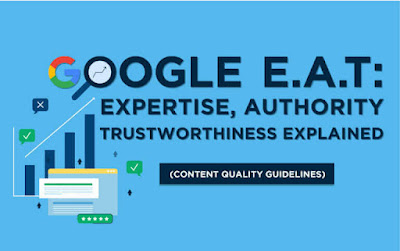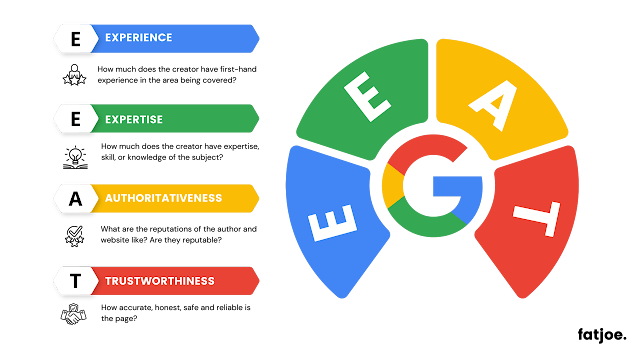The March 2024 Google Core Update has sent waves through the SEO community, impacting websites across various industries. This update, alongside the concurrent spam update, aims to prioritize high-quality, user-focused content while penalizing practices that detract from the user experience. If your website has suffered as a result of these updates, fear not. Recovery is possible by focusing on key areas: Content, Backlink Profile, Technical Issues, User Experience, and SEO. Here's how you can bounce back stronger.
Content: Elevate Quality and Relevance
The core of Google's updates has always been about content quality. The March 2024 update is no different, emphasizing the need for helpful, original, and engaging content. To recover:
Erase Unhelpful Content: Identify and remove or improve thin, duplicated, or AI-generated content that doesn't serve the user's intent.
Enhance Content Quality: Focus on creating content that provides real value, answers questions thoroughly, and is backed by research.
Address User Intent: Ensure your content aligns with what users are searching for, updating old posts to reflect current information and trends.
Backlink Profile: Clean and Strengthen a manipulated link profile can significantly impact your website's trustworthiness in Google's eyes. To address this:
Audit Your Backlinks: Use tools like Google Search Console to review your backlink profile for any unnatural or spammy links.
Disavow Harmful Links: If you find links that could be considered manipulative or low-quality, use Google's disavow tool to distance your site from them.
Technical Issues: Optimize Website Health Technical SEO issues can hinder your site's performance and user experience, affecting your rankings. To improve:
Improve Site Speed: Ensure your website loads quickly on all devices, as slow loading times can negatively impact rankings.
Mobile Optimization: With mobile-first indexing, your site must be fully optimized for mobile users.
Secure Your Site: Implement HTTPS to enhance security, a factor that Google considers in its rankings.
User Experience: Prioritize Your Audience
The March 2024 update places a strong emphasis on the user experience. To enhance UX:
Improve Navigation: Ensure your website is easy to navigate, with a clear structure and intuitive design.
Enhance Readability: Use headings, bullet points, and short paragraphs to make content easily digestible.
Optimize for Accessibility: Ensure your website is accessible to all users, including those with disabilities.
SEO: Align with Best Practices
Finally, revisiting and refining your overall SEO strategy is crucial for recovery:
Keyword Optimization: Focus on integrating relevant keywords naturally within your content, avoiding over-optimization.
Meta Data: Ensure your title tags and meta descriptions are compelling and accurately reflect the content of each page.
Internal Linking: Use internal links wisely to help users navigate your site and to distribute page authority throughout your website.
Recovering from the March 2024 Google Core Update requires a comprehensive approach, focusing on improving content quality, backlink profile, technical health, user experience, and SEO practices. By addressing these areas, you can not only recover from the update but also build a stronger, more resilient website that thrives in Google's evolving search landscape.
what are the best practices for improving website content after a core update
To improve website content after a core update, follow these best practices:Conduct a Content Audit:
Review existing content to ensure it meets the latest quality guidelines set by Google.
Evaluate content quality, relevance, and user engagement.
Identify and improve low-quality or irrelevant content.
Focus on High-Quality Content:
Ensure content is trustworthy, expert, and authoritative.
Use original data, charts, images, and research to enhance user experience.
Optimize content with searchable keywords and clarify ambiguous terms.
Enhance User Experience:
Ensure the website is easy to navigate and use.
Improve site speed and mobile-friendliness.
Ensure clear navigation and a seamless user experience.
Diversify Traffic Sources:
Rely on multiple traffic sources, such as social media, email marketing, paid advertising, and guest posting.
Build a strong brand presence across multiple platforms to provide a safety net during core update fluctuations.
Prioritize User Intent and Experience:
Understand and prioritize user intent by creating content that directly addresses user needs.
Ensure the site delivers a seamless, intuitive user experience, including fast load times and clear navigation.
Optimize for SEO:
Audit and optimize content for SEO, ensuring it aligns with Google's guidelines.
Use tools like AHREFS and SEMRush to track keyword performance and analyze competitor landscapes.
Monitor and Adapt:
Continuously monitor website performance using tools like Google Analytics and Search Console.
Adapt to changes by making improvements to content and user experience.
By following these best practices, you can improve your website's content and user experience, ensuring it remains competitive and effective after a core update.
how can I make my website more trustworthy to Google
To make your website more trustworthy to Google, focus on the following strategies:
Improve Content Quality and Relevance
Ensure your content is high-quality, informative, and relevant to user intent.
Demonstrate expertise, authoritativeness, and trustworthiness (E-A-T) through your content.
Use original data, research, and expert insights to back up your claims.
Avoid thin, low-quality content that provides little value to users.
Optimize Technical SEO
Ensure your website is mobile-friendly, loads quickly, and provides a good user experience.
Use secure HTTPS protocol and avoid deceptive practices or malware.
Fix any technical issues flagged in Google Search Console's Core Web Vitals report.
Build Trustworthy Backlinks
Focus on acquiring links from high-authority, relevant websites.
Avoid buying links or using manipulative link building tactics.
Disavow any unnatural or low-quality links pointing to your site.
Enhance User Experience
Make your website easy to navigate and use.
Avoid intrusive interstitials or pop-ups that disrupt the user experience.
Ensure your website's design and branding convey professionalism and trustworthiness.
Align with Google's Quality Guidelines
Familiarize yourself with Google's Webmaster Guidelines and ensure your website complies.
Avoid manipulative tactics or content abuse that violate Google's policies.
Regularly monitor your website's performance and adapt to Google's algorithm updates.
By implementing these strategies and focusing on providing a high-quality, trustworthy user experience, you can improve your website's standing in Google's eyes and increase its chances of ranking well in search results.
What are Some Examples of High-Quality Content that can help my site thrive
Here are some examples of high-quality content that can help your website thrive:
Authoritative, Expert-Written Content
Ensure your content is created by subject matter experts who can provide in-depth, trustworthy information.
Showcase your expertise through detailed, specific examples that demonstrate your knowledge.
Align your content with Google's E-E-A-T (Expertise, Authoritativeness, Trustworthiness) guidelines to improve SEO.
Engaging, User-Focused Content
Prioritize user intent and create content that directly addresses your audience's needs and questions.
Use a mix of written copy, visuals, and interactive elements to make your content engaging and easy to consume.
Provide value to users by offering actionable tips, step-by-step guides, and real-world examples they can relate to.
Optimized, SEO-Friendly Content
Conduct keyword research to identify relevant topics and questions your audience is searching for.
Optimize your content with searchable keywords, while ensuring a natural, readable flow.
Leverage the "Big 5" content topics: Pricing, Comparisons, Problems, Reviews, and Best Of to drive traffic and conversions.
Consistent, Well-Designed Content
Maintain a consistent brand voice, tone, and visual style across all your content.
Ensure your content is easy to navigate, with clear headings, bullet points, and formatting.
Prioritize readability, usability, and accessibility in your content design.
Regularly Updated, Relevant Content
Continuously monitor your content performance and adapt to user feedback and search trends.
Refresh and update existing content to keep it relevant and valuable to your audience.
Create a content calendar to ensure you're consistently publishing new, high-quality content.
By incorporating these elements into your content strategy, you can create a thriving, user-focused website that attracts and engages your target audience.







Comments
Post a Comment